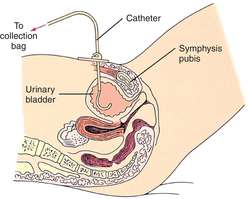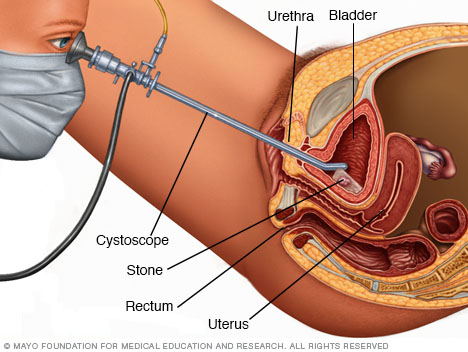Suprapubic Catheter Care: Health and Bladder Management
By Petr Kudlacek
June 1, 2016 • Fact checked by Dumb Little Man

Do you need a guide to suprapubic catheter care and bladder management? This post will talk about the essentials of suprapubic catheter care.
What is a suprapubic catheter?

A suprapubic catheter is a thin tube that is inserted straight into the bladder to drain urine. This type of catheter is used by patients who are not able to use a catheter that is inserted into the urethra.
When a patient receives a suprapubic catheter, they undergo a procedure in an operating room during which they are either given general anesthesia or local, spinal anesthesia. The catheter is inserted through the abdomen into the bladder during a process that last from 30 minutes to 1 hour. Usually suprapubic catheter insertion does not involve an overnight stay in the hospital.
About six weeks after your surgery, a medical professional at a healthcare facility will enable the changing of your suprapubic catheter. After this is done the first time, someone who has been trained in the process, including the patient or a relative, may perform this procedure.
Is a Suprapubic Catheter Better than a Urethral Catheter?
There are various reasons as to why a suprapubic catheter is often preferred over a urethral catheter. Overall, the former is easier to use and is more dependable. Hygienically, suprapubic catheters tend to be easier to clean and maintain.
There are also more choices when it comes to suprapubic catheter sizes. Urethral catheters should not exceed 14Ch, whereas suprapubic catheters as large as 20Ch may be used.
Larger catheters are less inclined to blockage. Also, once removed, the healing process for the catheter that’s been inserted into the abdomen is fast. Finally, with this type of device, one may engage in sexual activity, which is not the case with urethral models.
Drawbacks to urethral catheters include the fact that over a period of time the urethra may become damaged, which will expedite urinary leakage around the catheter. Also, damage to the bladder neck may occur when one uses this type of catheter. This would also facilitate unwanted leakage.
Possible Disadvantages of a Suprapubic Catheter

Some people will find that they are hypersensitive on and about the area where suprapubic catheter placement has taken place. Often, it’s found that such sensitivities wane with time.
Those who are overweight may have difficulty with placement of the catheter. Persistent discharge at the site of insertion is a problem for some, making it necessary to dress the site and change dressings in a timely manner. During the initial few weeks after insertion, some patients experience spasms.
Those who have any type of internalized catheter will be more likely to experience bladder stones and urinary tract infections. These are less problematic with other bladder management options such as intermittent catheterisation or sheath drainage.
Finally, after some time catheter blockages may become frequent prompting the need for one to undergo a cystoscopy, which is a surgical procedure designed to view and wash out the inside of one’s bladder.
Suprapubic Catheter Types
There are various types of suprapubic catheters, including those made of 100% silicone, which have been created for those who have a latex allergy. However, these can be more difficult to change than the standard kind, which are hydrogel coated latex catheters.
In terms of size, the 16Ch is the one that is most commonly used. Often, when a new catheter is inserted, the doctor will opt for an 18Ch, which will drain more easily due to the simple fact that a larger size means larger drainage holes. Better drainage reduces the chances of bacterial infection. The 18Ch may later be replaced by a 20Ch.
Proper Care of Your Bladder

In order to properly care for your bladder, it’s important to follow specific instructions from your doctor. However, there are some general guidelines and instructions that apply to just about anyone who has undergone suprapubic catheter insertion.
These include:
• Drink at the minimum 3 liters of fluids each day to flush the kidneys and bladder and prevent urinary tract infections.
See Also: There Are Huge Health Benefits of Drinking Water But How Much Should You Really Drink?
• It’s usual to have red or pink urine following initial catheter surgery and replacement.
• Seek help for bleeding if it is prolonged or excessive.
• Your doctor may give you a prescription, such as that for Oxybutynin/Detrusitol, to help inhibit leakage of the urethra.
• To reduce the risk of your catheter being pulled out, tape it to your abdomen and use a thigh strap for the drainage bag.
• Alternate on which leg you were the bag to reduce stress and soreness on the site.
• Your catheter balloon should have 10 mls of water in it.
• If you don’t have enough water in your catheter, it may fall out. If this is the case, remove what is in the balloon and replace it with 10mls of sterile water.
• Catheter changes must be accomplished swiftly as the suprapubic channel will close quickly once the device is removed.
• Some people use a suprapubic catheter with a catheter valve, allowing them to turn the urine flow off and on and to negate the use of a drainage bag.
See Also: 15 Simple Changes That Will Quickly Improve Your Health
For more information on suprapubic catheter care, make sure that you contact your heathcare professional.

